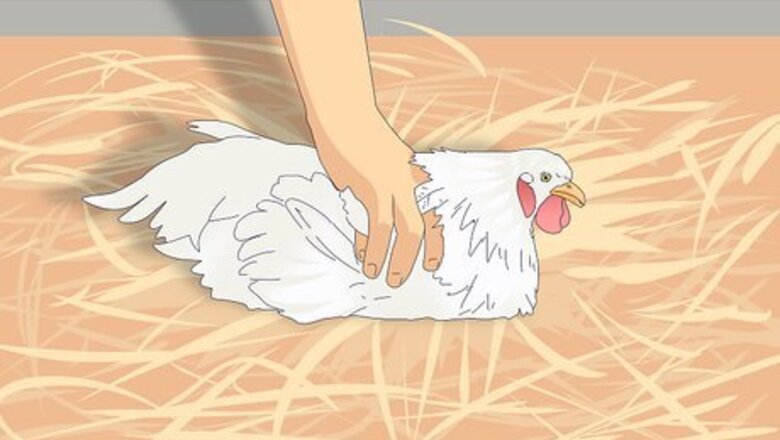
views
Content warning: This article is going to describe how to kill a chicken in detail. If you’re squeamish or uncomfortable, don’t force yourself to read through it. A vet can always euthanize a chicken for you.
- Dislocating a chicken’s vertebrae is the fastest and most efficient way to euthanize a chicken is to.
- Decapitate a chicken if you’re not confident in your ability to physically snap their neck.
- If you plan on using the meat or you want to kill the chicken without quick, violent motions, bleed them out with a boning knife.
- If you are not comfortable doing this, call a vet. They’ll euthanize your chicken for you.
Cervical Dislocation
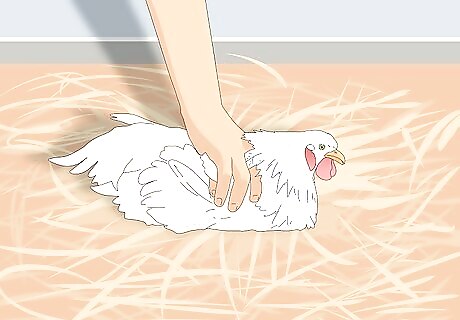
Pick the bird up and wait for them to calm down. Most chickens react a little erratically to being picked up, so don’t rush this and approach calmly. Scoop the chicken up from underneath and use feed to keep them calm. Wait for your chicken to relax as you adjust your grip. They’ve given you plenty of their best years, so end their life as humanely and peacefully as possible now. Cervical dislocation may seem kind of violent, but it’s one of the most efficient and humane ways to dispatch a backyard chicken. For this method to be humane, you must be swift, confident, and strong. If you hesitate, it could cause the chicken harm. Take your chicken to a vet or ask someone else to do this for you if you’re especially attached to your bird.
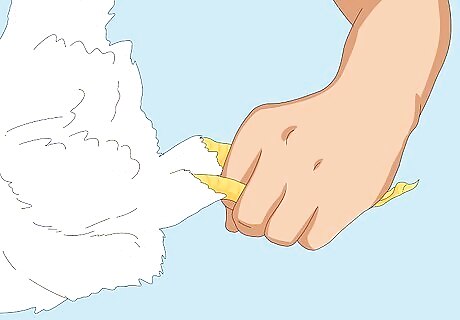
Grab the bird’s legs with your nondominant hand. Gently rotate the chicken so that their feet are pointing up towards your chest. Grip both of the bird’s feet firmly near the base of their backside to keep the bird still. If your chicken starts flapping their wings when you grab their legs, wrap your non-dominant arm around the chicken’s body and tuck them against your hip instead.
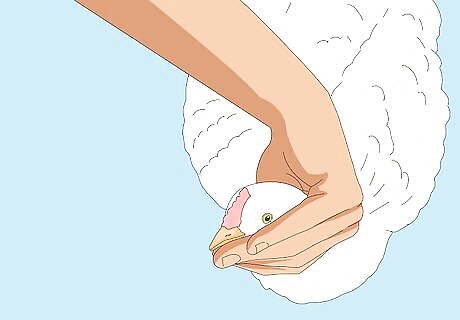
Wrap your fingers around the bird’s neck. Grip the bird around the upper portion of your bird’s neck where the brain stem meets the vertebrae (it’ll be especially soft and spongy). Wrap your thumb and index finger gently around this portion of the chicken’s neck. The inside of your palm should point to your backside. Keep your grip loose. You don’t want to scare or alarm your chicken while you’re getting them in the proper position. Some people prefer to slide the chicken’s neck in between their index and middle finger. If that’s more comfortable for you, go for it.
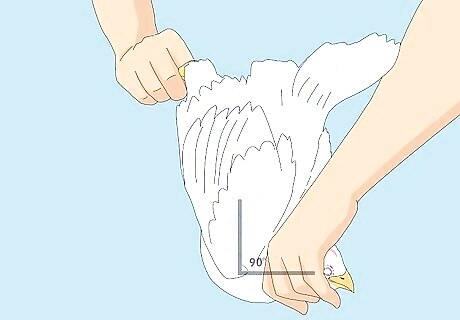
Tilt the bird’s neck down at a 90-degree angle. Slowly shift the chicken’s body so that their head is pointing away from you on your dominant side. Hold their feet firmly as you position the bird’s neck and head into an L-shape, with the beak pointing at the ground. If you’re holding the bird by tucking it against your hip (instead of gripping the feet), keep the chicken’s neck upright.
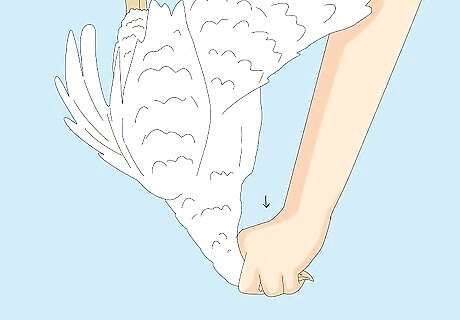
Yank the bird’s neck as hard as you possibly can to snap it. In a single smooth motion, tighten your dominant grip as hard as you can and pull the neck out away from you as far as it can physically go. As soon as you reach the point where the neck can’t be pulled back further, yank it backwards (like you’re pulling the bird’s beak towards its backside). You will hear a snap, feel the vertebrae separate in your dominant hand, and the bird will be dead. Again, it’s extremely important you do this with strength and speed. You will cause your chicken less pain by pulling as hard as you can. In the extremely rare chance that the first motion isn’t fatal, immediately pull the neck out again.
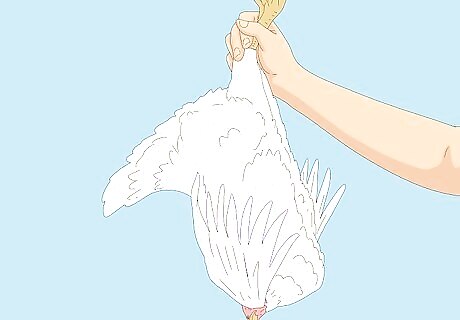
Hold the bird until the involuntary movement stops. Your chicken is going to shake, spasm, and move violently once you’ve snapped its neck. In your gut, you may feel terrible about causing it pain—rest assured, it’s dead. These are involuntary movements. The movement should stop in a few seconds. Chickens have a ton of nerve endings in their neck—way more than most animals. This is where the phrase “running like a chicken with its head cut off” comes from. Those nerves fire when the neck is snapped, which causes a fluttering of random motions.
Decapitation
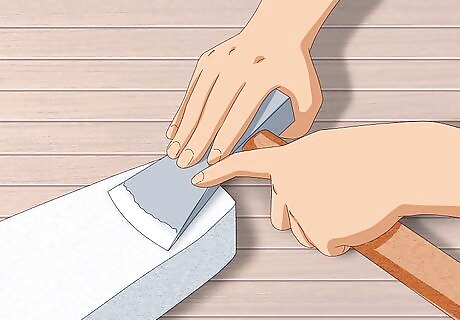
Sharpen your hatchet, axe, or butcher’s knife. To decapitate a chicken humanely, it’s extremely important that you do it in one strike. That means that you must use the sharpest blade possible. If your hatchet, axe, or butcher’s knife isn’t sharp, drag the edge against a grindstone or use a honing rod to sharpen the edge. This option is best if you have some experience handling an axe, hatchet, or butcher’s knife. A dull blade is less likely to cut cleanly through the neck, which can cause the bird pain in its final moments. The sharper your blade is, the more humane.
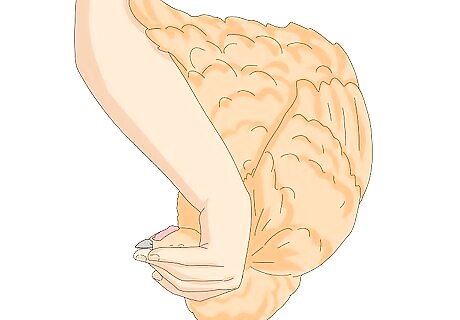
Feel near the base of the brainstem for a soft spot. Pick your chicken up gently and hold it comfortably in your hands to let it calm down. Move your fingers around the base of the chicken’s skull to feel for a soft area. This is where the vertebrae meets the brainstem, and it’s the spot you must hit with your blade to successfully kill the chicken humanely. You have to kill the bird quickly once you’ve stunned it to ensure a humane death, so finding the striking spot ahead of time will make this process smoother.
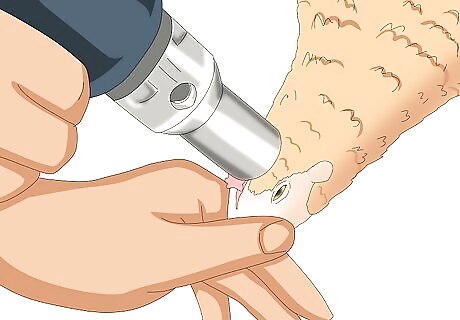
Stun the bird with a captive-bolt device. Captive bolts are stunning devices for livestock that render them unconscious right before they’re euthanized. Hold the chicken by the tip of its beak to keep their head still. Press the bolt against the side of their head, just above the eye. Once the bolt is positioned, press the trigger—a metal pole will fire out at a high speed and completely knock the bird out. Keep your hands and fingers away from the nozzle of the gun when you pull the trigger. If you cannot hold the bird still to do this, set them upside-down inside of a poultry cone to restrain them. It’s important to stun the chicken first because chickens can theoretically experience pain for a few moments after their head is removed. Knocking it out first is more humane.

Put the chicken on the chopping block and bring the blade down swiftly. Set the unconscious chicken down on your chopping block and pull the neck and head out gently to extend it. Grab your knife, axe, or hatchet, and chop through their neck at the point where the vertebrae meets the brainstem. The head should pop right off. Take a step back immediately as soon as you remove the head. Your chicken is going to flutter, shake, and move around. Blood might spray everywhere, so make some room. Bury or burn the chicken once the involuntary movement stops.
Bleeding

Set the chicken upside-down in a poultry cone. The poultry cone is designed specifically for butchering chickens. This cone will hug the chicken and keep it calm. Set your bird inside the cone with the feet in the air so that its head sticks out at the bottom. The killing cone is considered the most humane device for bleeding a chicken. You can theoretically bleed a chicken without one, but a chicken will struggle after the first cut, which can extend how long your chicken suffers. This is the method small poultry farmers and homesteaders use when they’re killing a chicken to be eaten, since bleeding a bird causes the least amount of damage to the meat.
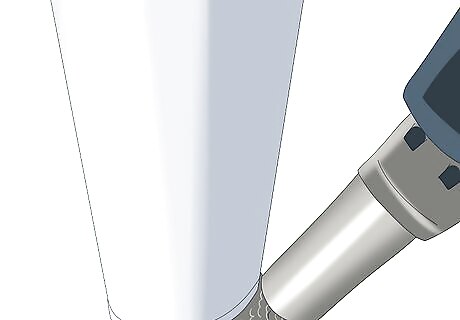
Stun the bird with a captive-bolt device. With your chicken’s head sticking out from the bottom of the cone, grab your captive-bolt device—a device that fires a pin to stun livestock for slaughter. Load the bolt and hold it up to the side of the chicken’s head, right above their eye (below the eye since they’re upside down). Pull the trigger to knock the chicken unconscious. If the chicken’s head won’t stay still and you can’t get a good shot off, grip the chicken’s beak to hold them still. Just make sure you don’t accidentally shoot your hand with the bolt.
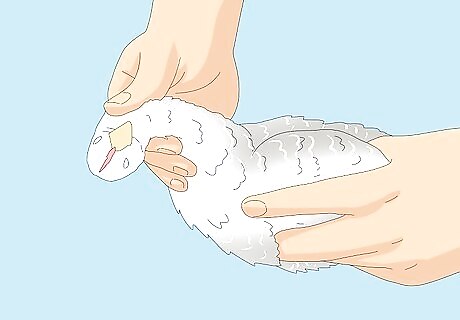
Feel along the side of the neck for a large artery. A carotid artery runs along each side of the chicken’s neck. Carefully drag your finger along the sides of the chicken’s neck until you feel a round artery. Once you’ve located it, peel the feathers back to expose the side of the bird’s neck and grab a sharp, thin knife. A boning knife is perfect for this, although you can purchase a special poultry sticker if you want a tool designed for this. Humans actually have the same carotid arteries. If you want to envision where the veins are, drag your fingers along the sides of your neck to find them.

Cut the chicken’s artery open by dragging the blade across their neck. Keep the feather spread open as you hold the head still with your nondominant hand. Drag the edge of the blade along the artery at a 45-degree angle to open the artery and begin bleeding your bird. There are two arteries, but you only need to cut one to kill the bird. If there’s a huge burst of blood immediately, you’ve made a perfect cut. The bird may twitch for a moment involuntarily, but it’s still unconscious. It is experiencing no pain here.
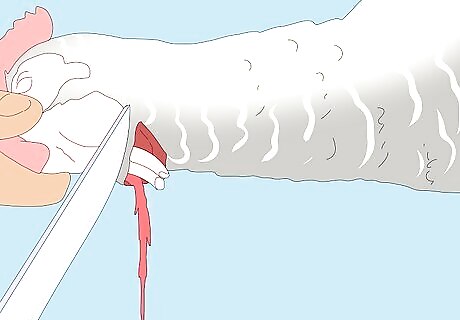
Puncture the bird’s brain immediately with a pithing cut to kill it. The pithing cut punctures the bird’s brain to immediately end its life. As it’s bleeding out, open the bird’s beak with your non-dominant hand and slide the point of your blade into its mouth. Push the tip of the blade directly into the skull at a slightly upward angle to kill the chicken. Wait a minute for the bird to stop bleeding out before you lift them out of the cone by their feet. Bury or burn the bird once you’re done.



















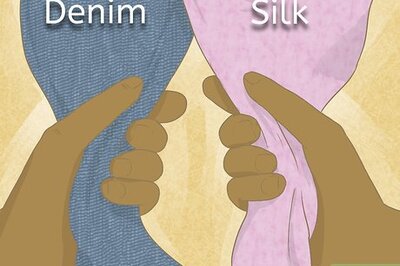
Comments
0 comment